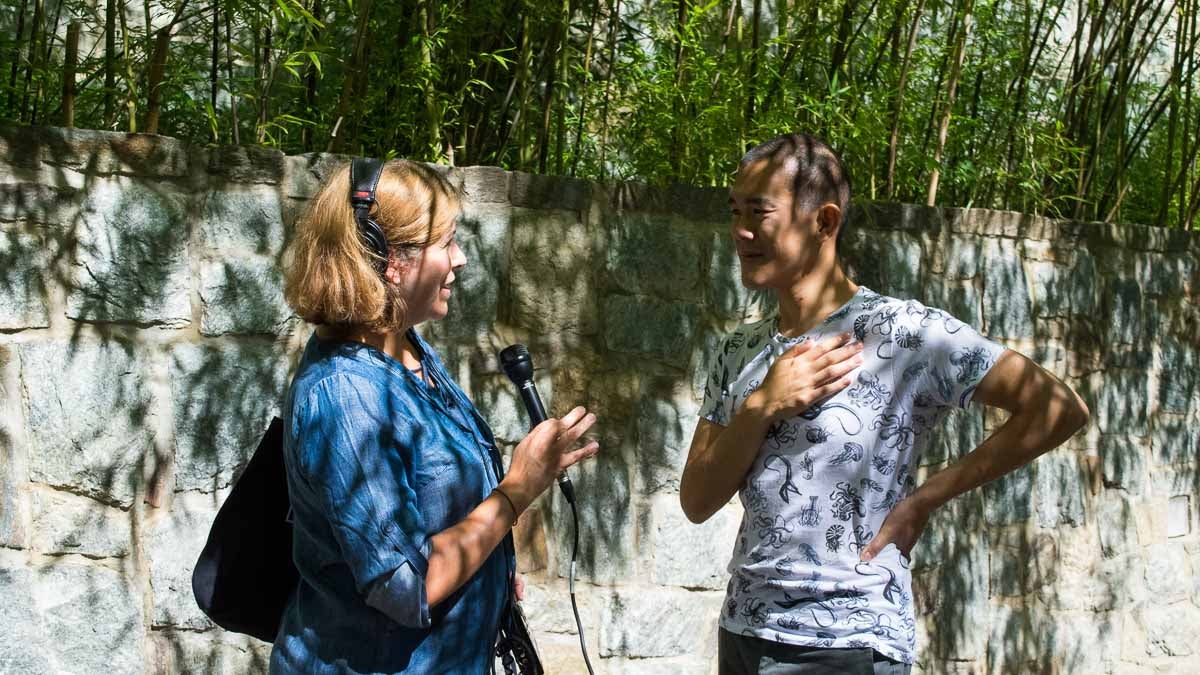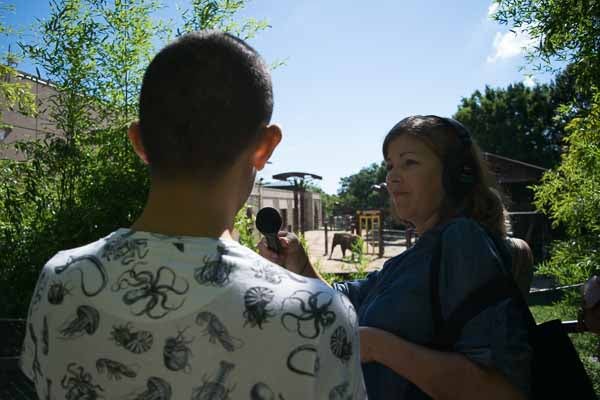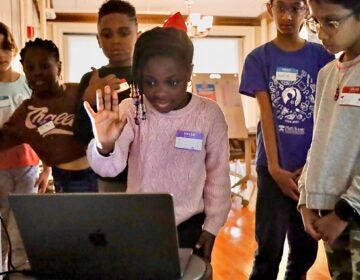A trip to the zoo with Ed Yong reveals an entire invisible world
Listen
Maiken Scott interviews science writer Ed Yong at the Smithsonian's National Zoo. (Paige Pfleger/WHYY)
Atlantic science writer Ed Yong can’t look at an elephant as “just” a giant, beautiful, and majestic animal. When he sees an elephant, he sees “a gigantic sack of microbes,” or so he put it during a recent trip to the Smithsonian’s National Zoo in Washington D.C.
That may not sound like the most adoring description, but it’s definitely a compliment coming from a man who’s been obsessed with unseen worlds for months. Yong has written a book about microbes called “I Contain Multitudes: The Microbes Within Us and a Grander View of Life” which dives deep into the the role of microbes that live within, on, and all around us.
With his charming British accent, and his T-shirt featuring gulper eels and cephalopods, Yong is great company for a walk through the zoo – even though to him, the animals are really just furry shells – the good stuff is the invisible zoo hidden within.
“That elephant, if you took all of the microbes out it, would weigh as much as a small child,” he said with admiration. “One single animal, it’s an entire world in its own right, and plant eaters rely on bacteria to digest the carbohydrates in the plants they eat – so if all of the microbes disappeared it wouldn’t be able to get the energy it needs.”

Maiken Scott and Ed Yong walk around the zoo. (Paige Pfleger/WHYY)
We talked about the beginnings of microbe research, and how they long held a terrible reputation because humans discovered that some of them cause disease. It’s only in the last decade or so that the more positive aspects have become clearer, and we now understand them as crucial and vital parts of our lives. And right now, microbes are really having a moment . “They are famous” says Yong. And there’s maybe a tendency to go overboard with excitement, and perhaps attribute too much power to them.
“I think people want universal answers to health problems, and something that can fix everything,” he explained. “People are looking at the microbiome to address many different conditions; diabetes, anxiety or depression. But a lot of these links are still correlational, and we don’t know if microbes are causing those conditions or are a consequence of them. But, microbes DO influence all sorts of aspects of our lives, that we previously though of as the providence of individuals.”
If somebody came along and wiped out all of the microbes with one gigantic and highly effective disinfectant wipe, the world would be a dark and scary place, said Yong.
“Many animals wouldn’t be able to exist at all, they would die quickly.” Humans wouldn’t die right away, but many of our bodily functions would be affected, Yong added. “Microbes are the lords of the planet. They shape the cycles of chemicals like nitrogen around the world. Life on the planet as we know it would stop working.”
Scientists are trying to catalog this unseen universe, and it’s so vast it seems almost impossible.
“Explorers like Darwin and Wallace sailed around the world looking at the animals and plants of far-flung places, and now we’re doing the same thing,” said Yong. “But the islands are the bodies of individual animals, and we’re looking at microbes that live within them.”
It’s all in the beginning stages in this phase, and there are a lot of unknowns, but Yong is excited about the possibilities.
“I get this sense of this amazing era of exploration, much like when these naturalist-adventurers were sailing around the world, it feels like that, but our explorers are using cotton swabs and DNA sequences rather then nets and jars.”

Maiken Scott interviews Ed Yong in front of the elephant exhibit at the Smithsonian’s National Zoo. (Paige Pfleger/WHYY)
WHYY is your source for fact-based, in-depth journalism and information. As a nonprofit organization, we rely on financial support from readers like you. Please give today.







